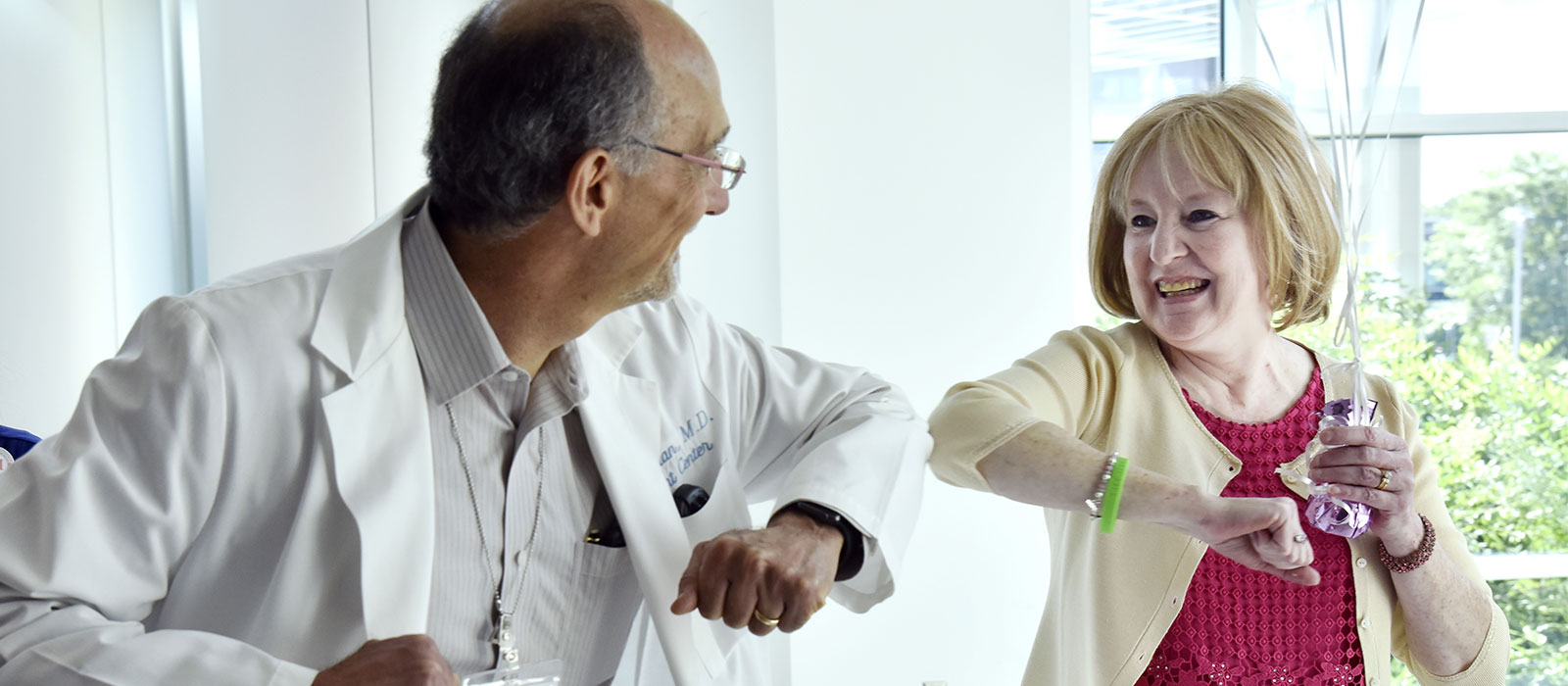Your physician will prescribe several medications which you will need to take regularly for the rest of your life. The transplant team will provide you with detailed information about how and when to take your medication.
Transplant patients generally receive a 3-drug regimen including a calcineurin inhibitor (cyclosporin (CSA) or tacrolimus), a purine synthesis inhibitor (mycophenolate mofetil (MMF) or azathioprine (AZA)) and corticosteroids.
The following information about immunosuppressive drugs is detailed and quite technical. Feel free to talk to the transplant team about your medication and any side effects you may experience. Also, keep in mind that each transplant patient responds differently to medication. It is unlikely you will experience all of the side effects listed here.
Immunosuppressive Drugs
| |
Mechanism of action |
Side effects |
| CSA |
Blocks calcineurin (inhibits T-cell activation) |
Nephrotoxicity, hypertension, neurotoxicity, hirsutism, gingival hyperplasia, hepatotoxicity |
| Tacrolimus |
Blocks calcineurin (inhibits T-cell activation) |
Nephrotoxicity, hypertension, neurotoxicity, diabetes mellitus |
| MMF |
Purine synthesis inhibitor (inhibits lymphocyte replication) |
Leucopenia, thrombocytopenia, gastrointestinal symptoms |
| AZA |
Purine synthesis inhibitor(inhibits lymphocyte replication) |
Hematotoxicity, alopecia, hepatotoxicity, pancreatitis, rash, gastrointestinal symptoms, teratogenicity |
| Prednisone |
Alteration of T-cell proliferation, inhibition of cytokine production, suppression of macrophage function |
Cushing’s syndrome, hypertension, hyperglycemia, infections, osteoporosis, cataracts, mood alterations |
| Sirolimus |
Suppression of cytokine-driven T-cell differentiation |
Hypertriglyceridemia, hypercholesterolemia, rash, hypokalemia, leukopenia, thrombocytopenia, gastrointestinal symptoms |
Cyclosporin A (CSA, Neoral, Gengraf, Sandimmune, Eon)
The major cyclosporin side effects include nephrotoxicity (kidney problems), which occur in one-third of patients. Fluid retention (swelling in feet and legs), high potassium and chloride levels may accompany elevated creatinine levels. It is often associated with high trough levels, and is mostly reversible upon dose reduction.
Hypertension, both systolic and diastolic, occurs in 50% of patients and usually develops within few days to a few months after CSA administration. Neurotoxicity, including headaches and fine hand tremors, occur in 1 in 3 patients and may improve without stopping therapy.
Peripheral neuropathy with symptoms of numbness, tingling and burning may also occur, as can mild alterations in mental status. Seizures, when CSA is used with high-dose steroids, have been reported.
Mild hirsutism (increased hair growth) on the face, arms, eyebrows and back occurs in 1 in 3 patients. Gingival hyperplasia (swelling of gums) occurs in 1 in 10 patients and may improve with vigorous oral hygiene.
Tacrolimus (FK506, Prograf)
A side-effect profile of Prograf is similar to CSA and includes similar rates of nephrotoxicity (kidney problems), neurotoxicity (tremor, headaches) and hypertension. Unlike cyclosporin, it can also cause diabetes mellitus and may need to be replaced by cyclosporin in patients with difficult-to-control diabetes.
Azathioprine (AZA, Imuran)
Major side effects of azathioprine include hematologic toxicity, temporary hair loss, hepatotoxicity, pancreatitis, rash and gastrointestinal (GI) side effects. Hematologic toxicity manifests as dose-dependent low white blood counts, although all bone marrow lines may be suppressed.
Liver function abnormalities may require dosage decreases or discontinuation of the medication. Other infrequent side effects include rash, nausea and vomiting. AZA should never be taken with allopurinol (medications for gout), as the combination can cause severe bone marrow suppression.
Mycophenolate mofetil (MMF, Cellcept)
Potential toxicities of MMF include low blood counts and GI side effects such as nausea, vomiting and diarrhea. GI side effects may be reduced by splitting the daily dose into three or four smaller doses. Sirolimus (rapamycin, Rapamune) can cause high triglycerides and cholesterol in a dose-dependent fashion.
It can also result in bone marrow suppression with low blood counts, especially when used with MMF. Low potassium levels, rash, nausea and vomiting have been reported.
Corticosteroids (prednisone, prednisolone, deltasone)
Prednisone toxicities are numerous and include high blood sugars and increased appetite, fluid retention, high blood pressure, cataracts, mood alterations, increased risk of infections, musculoskeletal symptoms and osteoporosis. Efforts are usually made to reduce the steroid dose as quickly as possible because of its multiple side effects.


 On behalf of Inova Advanced Lung Disease and Transplant team, welcome. Transplantation is like no other procedure in terms of meticulous planning. Unlike popular TV shows, it doesn't happen overnight in hospital emergency rooms!
On behalf of Inova Advanced Lung Disease and Transplant team, welcome. Transplantation is like no other procedure in terms of meticulous planning. Unlike popular TV shows, it doesn't happen overnight in hospital emergency rooms!